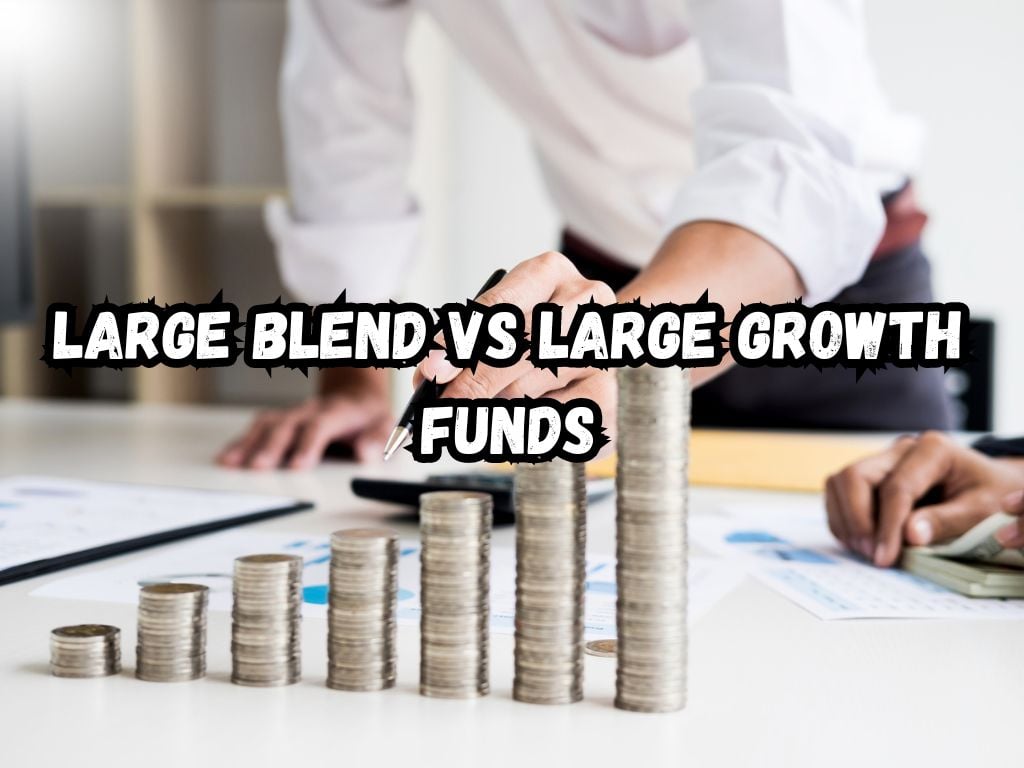Investing is a critical financial activity that can significantly shape one’s future. Understanding the mechanics behind various investment strategies and the nature of different investment vehicles is a fundamental stepping stone on the road to successful investing.
Among the investment options to consider are large blend and large growth funds, two types of investments with distinct features and importantly, varying risk and return profiles.
This article aims to shed light on the large blend vs large growth funds debate, to guide your investment decision-making process.
Understanding Large Blend Funds
Large blend funds are known for their versatility. They provide investors exposure to a mixed bag of both value and growth stocks.
As such, these funds do not specialize in a single category of stocks, instead offering opportunities for investors to benefit from the performance of diverse stocks.
Definition and Characteristics
Broadly speaking, large blend funds are portfolios comprising large U.S. companies with a blend of value and growth characteristics.
They’re a kind of ‘all-rounder’ fund that invests in both types of stocks. This diversified approach can potentially offer sizable returns from the growth stocks component and consistent dividends from value stocks.
The main characteristic of these funds is their diversification. Because they invest in a wide array of stocks from varying sectors, the risk is spread out. This can greatly reduce the impact of disappointing performance in any single sector or stock.

Key Investment Strategy of Large Blend Funds
Diversification is the primary strategy that guides large blend funds. They capture a wide swath of the market’s equity landscape, which can potentially offer formidable resistance against market volatility.
This can result in a more stable and predictable performance compared to more concentrated, sector-specific funds.
However, there’s a flip side to every coin. Even though diversification lessens the risk factor, it can also lead to average or muted returns. In a thriving market, these funds might not fully capture the upswing as they also hold stocks from slower-moving sectors.
Understanding Large Growth Funds
Let’s switch gears now and move on to large growth funds. These investment vehicles present strong potentials for substantial returns, although they also come with higher inherent risks.
Definition and Characteristics
Large growth funds are portfolios that focus on companies with above-average growth prospects. These are usually well-established companies that are expected to grow faster than other large-cap stocks.
Often, these funds focus more heavily on sectors like technology, which are populated with companies constantly pushing the boundaries of innovation.
Growth funds aim for the fences, banking on the substantial price appreciations that they hope their selected stocks will experience. In other words, they’re all about riding the momentum of high-performing stocks and sectors.
Key Investment Strategy of Large Growth Funds
The aggressive investment approach is the cornerstone of large growth funds. The fund managers seek out those companies that have strong signs of accelerated growth.
They’re chasing the high ride, which, while offering potential for high returns, also lends itself to greater volatility and potential losses.
Large Blend vs Large Growth Funds: All The Key Differences
Despite both being types of large-cap funds, large blend, and large growth funds have distinct characteristics, benefits, and drawbacks. It’s crucial to draw comparisons to suit your investment strategy.
Performance Analysis
In expanding markets, the aggressive approach of large growth funds often results in high returns. However, during a market downturn, these funds can lose value quickly.
Conversely, large blend funds are designed to perform consistently across varying market conditions. Thanks to their diversified portfolios, they exhibit resistance against market volatility.
Risk Considerations
While both types of funds involve a level of risk, large growth funds are typically riskier due to their aggressive growth-seeking strategy.
Large blend funds, meanwhile, offer more stability. It’s essential to remember that in lessening the risk, you may also limit potential profits.
Investment Time Horizon
Your investment timeline can also influence the selection. Large growth funds might offer quick gains in thriving markets, but their high volatility makes them less suitable for short-term investing. In contrast, large blend funds align better with long-term, steady growth strategies.

How to Choose Between Large Blend and Large Growth Funds
Assessing Your Investment Goals
The selection process should start by examining your financial goals. Are you looking for secure, albeit potentially slower, long-term growth, or are you seeking high, rapid returns and willing to tolerate the accompanying risk?
Considering Your Risk Tolerance
Your appetite for risk is another crucial factor. Large growth funds, with their high reward, high-risk nature, might align well with those that can stomach high volatility. If you seek stability and have a lower risk tolerance, large blend funds could be the better choice.
Diversification Benefits
Maintaining a portfolio that includes both fund types could be a wise approach. It allows you to hedge your bets, spreading the risk while still maintaining exposure to high-growth potential.
Frequently Asked Questions
What is a blend fund?
Blend funds offer a mix of both growth and value investment strategies. They can provide a diversified investment that taps into various sectors and stock types, seeking both appreciation and value.
How do growth funds differ from value funds?
Growth funds focus on companies expected to grow faster than others, while value funds target companies that are perceived to be undervalued or priced less than their intrinsic value in the market.
Can I have both large blend and large growth funds in my portfolio?
Absolutely! A mix of both funds in a portfolio can help to balance growth pursuits with risk management.
Conclusion
Understanding detailed knowledge about large blend and large growth funds is crucial.
While one offers stability and consistent growth (large blend), the other opens door for high returns, alongside a higher risk factor (large growth).
Carefully evaluate and align your decisions with your financial goals, risk tolerance, and investment timeline. And remember, every financial decision can benefit from speaking with a financial advisor.


 Tags:
Tags:










